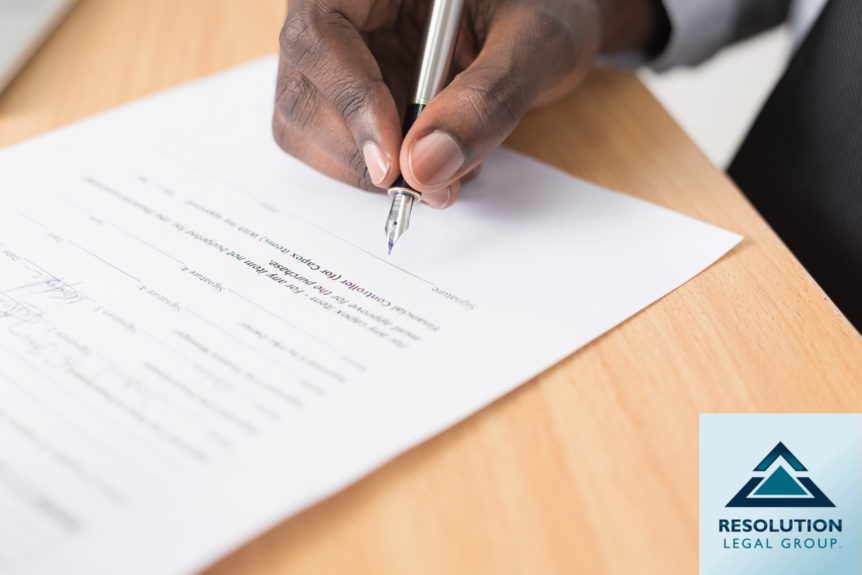PART 1: PAYCHECK PROTECTION PROGRAM
To soften the financial fallout caused by the COVID-19 pandemic, the Federal Government enacted the Coronavirus Aid, Relief, and Economic Security (CARES) Act on March 27, 2020. This Act, among other forms of economic stimulus, includes the wildly popular Paycheck Protection Program.
The Paycheck Protection Program has been extremely popular because 100% of the loan is eligible to be forgiven, under certain circumstances. This article describes the key provisions of the program and a summary of how to maximize the benefit of loan forgiveness.
Overview of the Paycheck Protection Program
Businesses that employ 500 employees or less, self-employed individuals, and independent contractors are all eligible to apply for a loan through the Paycheck Protection Program (“PPP”). The PPP program offers a loan in an amount up to 2.5 times the borrower’s monthly payroll expenses (calculated based on the average of the last 12 months or from calendar year 2019), not to exceed $10,000,000. The borrower applies for the PPP loan through a participating bank, which then obtains a 100% guaranty of the loan from the U.S. Small Business Administration (“SBA”). Borrowers must certify in good faith that their PPP loan request is necessary to support its ongoing operations, taking into account their access to other forms of liquidity. After the bank receives the SBA’s confirmation that it will guaranty the loan amount, the bank will directly fund the loan to the borrower; the funds do not come from the SBA.
The borrower can use the PPP loan funds for “qualified expenses,” including payroll expenses, utilities, rent payments, and interest on qualified mortgages. Self-employed borrowers can also apply and use the funds to pay himself/herself wages, based upon the average monthly wages earned during the previous 12 months.
After obtaining a PPP loan, a borrower may apply for forgiveness of the entire balance of the loan. Applying for loan forgiveness involves submitting a request to the bank that made the loan, and providing enough documentation to prove that the loan was used for qualified expenses, and that the other requirements of forgiveness are met. Upon approval, the SBA will repay the amount of the loan that is forgiven directly to the bank, and the loan balance for which the borrower remains liable will be adjusted accordingly.
Based on the information published so far, payroll expenses during the 8-week period beginning on the date the loan funds were disbursed to the borrower are eligible for forgiveness and will not have to be paid back. The following are included as “payroll expenses” for purposes of calculating the loan amount and the amount eligible for forgiveness:
- Salaries, wages, commissions, and tips (up to $100,000 on an annualized basis for each employee);
- Employee benefits including vacation, parental, and sick leave; and
- Employee health care benefits including insurance premiums.
Even if the remaining portion of the PPP loan is used for non-payroll expenses, it is also eligible for forgiveness as long as (1) the funds are used for qualified expenses, and (2) the total amount of loan funds spent on non-payroll expenses does not exceed 25% of the total loan amount forgiven. For example, we anticipate that a borrower will qualify for 100% loan forgiveness if 75% of the loan is spent on up to 8 weeks of payroll expenses and the remaining 25% is spent on qualifying mortgage, rent, and utility expenses.
If there is a portion of the loan that must be repaid, repayment terms include 1% interest, 2-year maturity, and the first payment due six months after loan disbursement.
When applying for forgiveness of the PPP loan balance, the amount forgiven is subject to reduction (and the borrower will have to repay a portion of the loan) if either the borrower’s number of full-time equivalent employees decreases based upon a prior period selected by the borrower or the borrower’s annual wages and salaries under $100,000 are cut by more than 25%.
Other attributes that make the PPP loan attractive include that the borrower does not have to:
- Prove it has exhausted other sources of financing before applying for the loan;
- Pledge collateral to secure the loan; and
- Provide a personal guaranty of the loan.
We recommend borrowers open a separate bank account to deposit and spend the proceeds from a PPP loan. Maintaining a separate account will make it easier to provide documentation substantiating how the PPP funds were used when the borrower applies for PPP loan forgiveness.
Business owners interested in the PPP loan program should act quickly. The first $349 Billion allocated to fund this program was depleted in two weeks. On April 24, President Trump signed into law a relief bill which includes an additional $310 Billion to further fund the PPP program. Many banks are giving priority to their existing customers, so business owners should first contact their current bank to inquire whether it is participating in the PPP loan program. Each bank will require a borrower to complete an application, submit documentation supporting the loan request, and sign loan documents.
We will post additional articles discussing the nuances of the PPP program as more guidance is published by the SBA, the Treasury, and Congress.
Links to useful resources relating to the PPP program:
- U.S. Small Business Administration’s landing page for information about the PPP
- Paycheck Protection Program Borrower Application Form
- U.S. Senate Committee on Small Business and Entrepreneurship’s fact-sheet on financial resources to assist with financial hardship due to COVID-19 (See pages 2-5 for a great summary of the PPP program.)
- U.S. Small Business Administration’s landing page for all of the funding options to assist during the COVID-19 pandemic, including the PPP and Economic Injury Disaster Loan programs (and more!)
- The U.S. Treasury’s Interim Final Rule explaining how to calculate the maximum amount of PPP funds you may borrow (See pages 8-10)
- U.S. Chamber of Commerce provides a PPP loan summary and Information related to federal tax credits for employers who retain employees during the COVID-19 pandemic
For more information contact Resolution Legal Group at 405-235-6500.
Disclaimer:
The information contained in Resolution Legal Group’s publications and on its website (“RLG’s Communications”) does not, and is not intended to, constitute legal advice on any specific facts, circumstances, or subject matter.
All information, content, and materials available in RLG’s Communications are provided solely for general informational purposes and may not constitute the most up-to-date legal or other information. Further, you may not quote or reference RLG’s Communications in any other publication or proceeding without obtaining Resolution Legal Group’s prior written consent, which may be given or withheld at our discretion.
RLG’s Communications are not an offer to represent you, nor are they intended to create an attorney-client relationship with you. No recipients of content from RLG’s Communications, whether clients or otherwise, should act or refrain from acting on the basis of information contained therein without seeking the appropriate legal and/or professional advice from an attorney and/or other licensed professional in the relevant jurisdiction regarding the particular facts and circumstances at issue. Only your individual attorney can provide assurances that the information contained herein – and your interpretation thereof – is applicable or appropriate to your particular situation. All liability with respect to actions taken or not taken based on the contents of this site are hereby expressly disclaimed.
RLG’s Communications may contain links to other third-party websites. Such links are provided only for the convenience of the reader, user, or browser; RLG does not recommend or endorse the contents of the third-party sites. The views set forth in RLG’s Communications are the personal views of the author and do not necessarily reflect those of RLG as a whole. The content on this posting is provided “as is;” no representations are made that the content is error-free.

